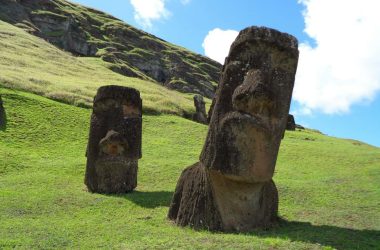A contemporary reproduction of 3500-year-old armour from the Mycenaean civilisation
Andreas Flouris and Marija Marković
Trendy navy volunteers donned replicas of historical Greek armour and engaged in workout routines impressed by Homer’s epic poem The Iliad. The demonstration reveals how elite Bronze Age warriors might have fought in heavy protecting gear throughout sustained fight.
The experiment’s outcomes strongly recommend that the 3500-year-old Dendra armour swimsuit – one of many oldest full fits of metallic armour from Europe’s Bronze Age – was certainly appropriate for battle. Some students have argued that it was merely a ceremonial outfit for the Mycenaean civilisation that after dominated mainland Greece and the Aegean Sea’s islands.
Andreas Flouris on the College of Thessaly in Greece and his colleagues recruited trendy Greece’s Hellenic Marines to put on 23-kilogram Dendra armour replicas as every participant walked, ran, rode on a reproduction chariot and carried out fight strikes involving a sword, spear, bow and arrow and even a stone.
These actions adopted Homer’s descriptions of closely armoured elite warriors, surrounded by bands of followers, roaming the battlefield, periodically attacking the enemy and retreating to security behind the principle battle traces to relaxation and eat, says co-author Ken Wardle on the College of Birmingham within the UK.
“Homeric preventing exercise was characterised by hit-and-run techniques, a type of bodily effort described in trendy physiology as ‘high-intensity interval train’,” says Flouris.
All through the 11-hour train interval, the researchers recorded the armour wearers’ coronary heart charge, core physique temperature and common pores and skin temperature, examined their blood and measured the power price of every exercise. Additionally they assigned an Iliad-inspired Mediterranean meal plan, that includes heavier breakfasts and dinners together with snacks similar to dry bread, honey, goat cheese and onions.
The armour-wearing volunteers efficiently endured the routine, regardless of reporting indicators of fatigue and soreness. However they may have most likely exerted much more effort in an actual fight scenario “had their life trusted it”, says crew member Yiannis Koutedakis, additionally on the College of Thessaly.
The crew additionally used a computer-based mathematical mannequin to indicate how a warrior sporting the Dendra armour might have lasted the complete 11-hour fight interval in all however probably the most excessive outside circumstances and excessive temperatures.
“Although few archaeologists would view Homer as a dependable supply for Bronze Age warfare, and certainly the research solely engages flippantly with archaeological research of warfare and bronze armour, their rigorous protocols for testing the armour are essential for measuring its practicality for sustained use in battle,” says Barry Molloy on the College Faculty Dublin in Eire.
The research’s Dendra armour demonstration might assist interpret comparable artefacts, similar to armour found within the so-called Griffin Warrior Tomb in Greece, say Sharon Stocker and Jack Davis on the College of Cincinnati in Ohio. “Although we doubt that the Hellenic Marines will undertake it as their official gear any time quickly,” says Stocker.
Matters:












